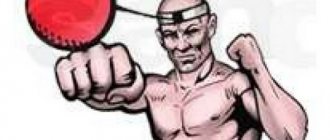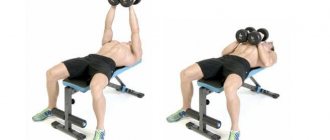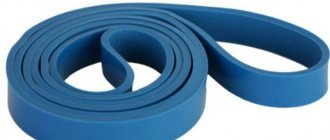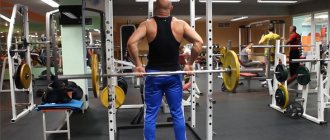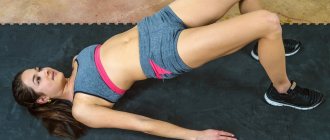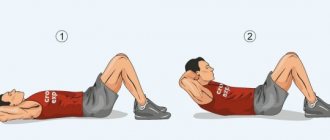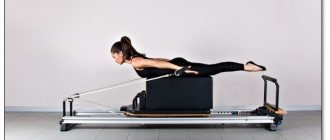Grip and big sport
A strong grip is the main characteristic of athletes performing in this form of weightlifting, such as armlifting. This is a professional sport that brings athletes worldwide fame, good prizes and, of course, a sense of pride in the results obtained. In general, there is something to think about - maybe you will be able to achieve great heights in this sport.
Armlifting is not as popular as football or tennis, but an army of thousands of fans still exists.
Super grip is useful not only in itself. Developed hand muscles are of great importance in arm wrestling, powerlifting, bodybuilding, workout, tennis, and hockey. In any sport where you need to hold significant weight with your hands, grip is of great importance.
Preparation and starting position
If you do not have special equipment, then you can do it yourself without much difficulty. Take a wooden board 5 cm x 10 cm long 61 cm and drill a hole in its center (if you have large hands, then you need to take a board 5 cm x 13 cm). Pass a strong cord through the hole and attach weights or a collapsible dumbbell to it using a carabiner. If the length of the board allows, then you can attach a large hook to each end of it, from below. The board is then attached using hooks to a regular barbell. By lifting the board, you are also lifting the barbell. The long length of the board is due to the need to minimize balance problems that can occur when the board is hooked to a barbell.
It is not necessary to use a wooden board - you can ask a welder to make such a block of metal for you. You will need to apply something to the surface of the metal so that it does not slip out of your fingers.
A thickness of 10 cm is usually sufficient, but you can make the block or board either thinner or thicker if you need it. If the surface is too smooth, you can make your grip more secure by wrapping the block or stick in some rough material, such as a tarp.
Alternatively, you can place a pair of plates, smooth sides facing out, on a metal or wooden stick. Press them together using locks. Here's an improvised block for you. You can hang pancakes on the outside of the internal locks if necessary, and you can secure them with another pair of locks. Below you can see what a similar device looks like, made on the basis of a thick round wooden stick (brush roller), which in this case acts as a bar.
A collapsible device for training the muscles of the hands and forearms, made using a wooden stick 5 cm in diameter.
To avoid injuring your feet, place the weight on a low platform so that the weight cannot fall onto your feet. Place a rubber mat or thick cardboard under the weight in case you drop the device. Place your legs wider so that your feet are not under the weight. From this point of view, in this exercise it is better to use small and medium-sized pancakes rather than large standard ones. Always think about your safety.
Grab and ordinary life
A men's meeting begins with a handshake. His strength is a man’s calling card. When you greet with a strong grip, this already lets the other man know that you are “strong.”
This is the first reason why there should be strength in the palm.
Men regularly lift something - at work, at home, while grocery shopping. When you didn’t have a car, you carried bags (and previously nets) of groceries home. Remember how hard it was sometimes? How the fingers unbent of their own accord under the weight of the package. Now most of you have cars. At most, you carry the same packages to the car. And then from the car to the house. In “horseless” times the grip was stronger, that’s for sure.
But, for example, there is an emergency situation when you need to climb a couple of meters up, and this is a matter of life and death. Again, the strength of the brushes will solve this situation in the direction you want.
And if your hands are weak, you can lose a lot. This happened during earthquakes, falls, landslides, persecution. A good example of this is the movie Cliffhanger, starring Sylvester Stallone.
And, of course, we cannot leave aside the visual perception of the forearms. After all, hand training involves active work of these muscles. Massive and powerful forearms immediately place emphasis on the question: is it worth talking to you carelessly or rudely.
A strong grip (or better yet, a perfect grip) is the key to confidence. Its significance is great, as you have already noticed, not only in sports, but also in everyday life.
How to strengthen your pinch grip
In another post we described an exercise with barbell plates. If you don’t have them on hand or you prefer to study at home, you can easily find a flat and heavy object in your apartment. A substitute can be dumbbells with a rope attached to them.
For thumb training. Place 4 fingers of your palm on a solid base, such as a table or chair. With your thumb out like a natural hook, place a weight on it and hold the weight in that position.
To train the remaining fingers. Stand up straight and, taking a weight in your palm, hold it with your arms down
Start with a weight you can hold for 15 seconds and work your way up. Gradually move to heavier weights. A good practice would be to do exercises on the bar, including simple hangs. Don't forget about pull-ups: they are excellent for “pumping up” the pinch grip.
Cover: Pixabay
Principles of Grip Training
Grip training is the only way to strengthen your hand muscles. Without this, it is impossible to achieve extraordinary results. However, a person’s genetic predisposition also plays some role.
An athlete’s muscle mass does not always indicate the strength of his grip. It happens that the outcome of a competition is decided by the thickness of the forearm tendons, and not at all by the volume of the muscles. Moreover, the girth of the biceps does not in any way affect the grip strength of the hand - the shoulder flexor is not involved in this movement.
So, the forearm has 19 different muscles. Only 4 of these 19 provide turns. The rest are responsible for flexion and extension.
https://www.youtube.com/watch?v=B8C3CxRQxnQ
There are a number of exercises that are good only at the initial stage of training. When performed over a long period of time, they are able to maintain the current level of muscle development, but they will not be enough for further progress. We're talking specifically about grip strength.
Hanging on the horizontal bar
Constantly hanging on the horizontal bar strengthens your grip at the initial stage of training. When you can hang for about a minute with your hands on the bar, your progress will stop. Then you can increase the hanging time, but the strength will not increase. Each person’s adaptation time is different; some will stop progressing after just 30 seconds of hanging.
Of course, such a hang in itself is very useful. In particular, the longer you hang, the more your spine will stretch (this is more often a good thing than a bad thing), and the endurance of your wrist muscles will increase noticeably. Strength is not, progress will stop over time.
One type manual expander
Very often, the lack of results from training with a manual expander is due to the unchanging load on the muscles. There is training, but there is no progression - that is, you simply maintain a certain level of strength, but do not grow further. Quite a lot of people face this.
If you carry a donut in your pocket and squeeze it all the time, up to a certain point your strength will increase, and then progress will stop, because the resistance of the machine is constant.
Muscles require adaptive training: that is, as soon as the muscle has the opportunity to do a little more, this opportunity must be immediately used, forcing the muscles to make more significant efforts.
The exact same statement can be made for almost any exercise. The main thing is not to use one weight.
Anatomy, biomechanics and exercises to strengthen the pinch grip
We have already talked about the main types of grips, the biomechanics of each of them and some ways to develop them. Here we’ll talk more about the pinch grip.
It is the “daily bread” for climbers, their main and natural tool, when the weight of the climber on the rock is held only by the strength and tenacity of the pinch grip.
Photo: Pixabay
A few words about its ergonomics and functional anatomy
The most important and in demand in the pinch grip is the index finger. The middle one bears the main weight load and the strength of the “hook,” for example, when an athlete clings to a ledge with his middle finger, as strong as a rock hook. Also, for the best grip, not only the thumb, as is traditionally believed, plays an important role, but also the index finger.
According to research, it bears more than a third of the total load placed on the hand. The little finger plays a key role in climbing, not because of the force applied, but because of its stabilizing effect.
The key to success is a complex workload
Developing grip strength is a versatile activity. You should do different exercises, gradually increasing the load.
Although, if you are satisfied with a slightly more powerful grip than your friends, a few round expanders will be enough for you. Just remember to give your wrist muscles a heavier workout periodically.
To achieve the best results, in addition to your hands, you should train the rest of your body. This is a simple truth that is not obvious to everyone. Isolated training of grip alone will not give the desired result. The body must work harmoniously.
You can do any physical activity. You can work out in the gym, play your favorite sport, or do exercises in the morning. If you want, just run, it will give you basic endurance. Grip strength training will be more effective if all other muscles are developed.
Cardio, by the way, in addition to developing endurance, has another side - improving blood circulation and saturating body cells with nutrients and oxygen. Thanks to accelerated metabolism, muscles will work better.
Finger training
To transfer the load from all your fingers to their tips, you will need a thin but durable wooden board. In addition, you will need to come up with a way to hang the weight from this bar. Alternatively, have a welder weld a thin 25cm x 2.5cm strip of metal to the hook. You will then attach this hook to the pin. You can grasp this device either with both hands at the same time, or with one hand at a time. The thumb should be on one side and the other fingers on the other. Find the grip and place on the device that is most comfortable for you, but always use the same way and grip afterwards.
A metal bar 5 cm x 10 cm x 56 cm for training the muscles of the hands, fingers and forearms, a pin on which to put weights on, and a thin bar for holding in the fingertips.
This thin block, in addition to other grip exercises, will help you train the muscles of the thumb in conjunction with any other finger on the same hand. Let's see if, with the help of this device, you could develop the strength of your fingers to such an extent that you could then bend coins?
Exercises
Not all athletes know how to increase grip strength. And not always those who have an impressive figure can boast of success in this area. So what to do, how to strengthen your hands?
Changing expanders
To get started, go to the nearest sports store and find a “bagel” there. Try working with expanders of different elasticity, decide which one is moderately difficult for you to work with. Take 2 expanders at once - the one you like and one more, a little heavier for compression.
Work with the easier option first. Get to the point where you can do 50 compressions with each hand. Sometimes you can twist your fists while the expander is clenched - it will be more difficult. There is no need to hold your palm clenched for a long time; a second is enough.
Please note: when you work with a ring resistance band, the muscles of different fingers are tensed differently. Try to make sure that all of them experience approximately the same amount of stress.
When you can do 50 compressions with each hand, move on to a heavier expander. And so, as it progresses, you will need to buy a new one.
One day you will have to give up the “donut” and buy a V-shaped expander. It has more resistance and will be your next level workout. Additionally, you can practice finger push-ups, rope climbs and other exercises.
Engaging the extensors
In addition to the wrist flexors, it will be useful to pay attention to the extensors. Extending the palm with force does not have any practical application, but in general, comprehensive muscle training will give the best effect.
The simplest thing is to put a strong rubber band on your closed fingers and spread them apart. You can invent some of your own ways to load the palm during extension, here ingenuity and imagination are welcome.
Tracking progress
If you want to track your progress, you will need a wrist dynamometer. This is a device that allows you to see how much force your hand develops when compressed. The numbers will be your guide.
Training the forearms
Notice what tenses when you clench your fist. That's right, the inner part of the forearm. Apparently, this muscle also needs to be pumped?
She is directly pumped by curling her wrists with a barbell. Try it - you won't regret it. Do not forget about the progression of scales (but not thoughtlessly, but in accordance with your capabilities).
In addition to such curls, there are a lot of biceps exercises that actively engage the muscles of the forearms. In particular, these are hammers with dumbbells.
By the way, don't forget about warming up. The muscles of the hand are the same muscles as the triceps and biceps. You don’t go bench press the barbell immediately with the maximum weight, but approach this weight gradually.
Knife grips. (Brief overview).
So, knife grip , that is, the way the weapon is held in the hand. At first glance, it is the simplest concept, but when it comes to practice, it suddenly turns out that behind the external simplicity and seemingly unambiguousness, there are many subtleties and variations hidden. On the one hand, the grip depends on the shape of the knife in general and the handle in particular; depending on the task that is set in battle (so with a grip designed to easily “describe” the enemy, you will not be able to penetrate the body armor, and in the opposite case everything will be much more difficult). On the other hand, the grip itself largely determines the technical arsenal used, its specificity and the combat distance. And, of course, in many respects the use of one grip or another is interpreted by personal preferences, determined by both the physical and psychological characteristics of the fighter.
There are two main criteria that, in principle, underlie all the differences between grips: the rigidity of the grip and the mobility of the hand. The first is responsible for securely holding the knife in the hand, while the second is responsible for freedom of movement, allowing you to control the weapon more maneuverably. Moreover, as a rule, the more secure the hold, the stronger the wrist is secured, which negatively affects the mobility of the hand and reduces the possibility of fine manipulation of the weapon, generally making the technique rougher. And vice versa: the more mobility the hand gains, the softer and weaker the grip of the knife handle becomes, which is fraught with its loss during forceful contact.
The most balanced in the ratio of “holding rigidity – hand mobility” is the so-called “diagonal” (or, otherwise, “saber”) grip, which, due to its certain versatility, is used in the “Gran” CPF system as a base one. So what does he look like? Let's start with the fact that this grip exists in two very similar versions, conventionally called “knife” and “dagger” (conventionally, since both options are applicable for both a knife and a dagger, with the only difference being ease of use). In the knife version, the handle of the knife is held by three fingers - the middle, ring and little fingers, while the index finger moves freely along the handle (depending on its shape). The thumb lies on the back of the knife handle or (this is typical for knives with a relatively short handle) on the butt, directly at the base of the blade, as if pressing the knife into the hand.
Such a grip, on the one hand, does not create a rigid angular structure with the forearm, as is the case with most rigid grips, and on the other hand, it quite firmly fixes the knife in the hand with three “squeezing” fingers and one “pressing” one. The weapon turns into an extension of your hand, which allows you to carry out both high-speed series of piercing blows from different directions and complex shaped cutting techniques, as well as forceful interaction options, such as weapon control, etc. Plus - increased accuracy of the piercing blow provided by the person performing the function a kind of “sight” with the thumb aligned with the tip of the knife, which significantly reduces the “wobble” of the weapon at the moment of impact. The “dagger” version of the diagonal grip differs in that the thumb is placed not on the back of the handle or the spine of the blade, but in the plane, that is, when the fist is turned down, the blade of the knife is parallel to the ground.
It is most suitable for working with a dagger, since it allows you to use both sides of the blade with equal efficiency, which is almost ideal for the “painting” technique, with an abundance of return movements and trimming. Piercing blows with such a grip also acquire a number of certain advantages: firstly, it is easier for a blade deployed in a horizontal plane to pass between the enemy’s ribs without getting stuck in them; and secondly, the possibility of cutting large blood vessels, which are located vertically in the human body, increases. The only drawback, compared to the “knife” version, is the complexity of the controls: since additional fixation is carried out by pressing in the plane of the blade, that is, perpendicular to the blade, the control will be unclear, unable to withstand a strong blow. In fact, forceful control is only possible by applying the plane of the blade, which is not very effective due to the lack of opportunity to cause any significant harm to the enemy.
Below are brief characteristics of the most common grip options. 1. Straight (aka “military”, aka “hammer grip”) is the simplest grip. The hand simply clenches into a fist around the handle of the knife - ninety-nine out of a hundred people, picking up a knife for the first time, will probably take it with this particular grip, since it is the most familiar and natural. In fact, the technique of working with such a grip is more reminiscent of working with a sword than with a knife, since the cutting blow, due to the impossibility of a smooth pull, turns more into a chopping blow.
Pros: Perhaps the tightest grip. As in terms of holding a weapon - the handle is fixed with virtually all fingers, even the usually almost unused index finger is pressed by the thumb; as well as for striking. Convenient for knocking out weapons from an enemy in a blade-to-blade collision. Cons: Stiffness of the hand, which results in all of the following. Forced wide cutting movements, the virtual impossibility of “funnels”, the difficulty of controlling the weapon - the technique of working with such a grip, as already mentioned, resembles working not with a knife, but with a short sword. It is especially worth noting that direct piercing blows often go upward from the original target, so that separate efforts have to be made to more clearly control the movement. Another disadvantage, despite all the rigidity of the hold, is the insufficient reliability of the controls, due to the fact that the knife blade itself is not supported by anything, which is why during forceful contact (especially if the blade is long and the point of contact is close to the tip) the knife can “nod” » back without maintaining control.
2. Filipino - the handle is firmly held by four fingers, the thumb, directed clearly perpendicular to the rest, lies on the butt of the knife.
Pros: Also a very strong grip. The thumb lying on the back of the knife allows you to put additional force into cutting and chopping blows and, in addition, makes piercing blows more targeted, preventing the blade from deviating to the sides. In addition, placing your finger on the butt of the knife, and not on the back of the handle, as in a diagonal grip, gives greater rigidity to the “controls”. Cons: Still the same stiffness of the hand, albeit less than in the case of a direct grip, and everything connected with it. The grip is focused exclusively on the knife and is practically impossible when working with a dagger. Moreover, not just a knife, but a fairly large knife: that is, one whose blade will be significantly longer than your thumb, since in this case the depth of possible penetration of a piercing blow will be limited not by the length of the blade, but by the distance from the tip to the tip of the thumb.
3. Reverse - as in the military grip, the hand is clenched into a fist around the handle, only this time the blade is directed downward from the fist. The thumb may overlap the top of the handle. The grip is very much promoted and mythologized both in literature and in video materials. So much so that in many American and European training manuals it is declared almost as the main one (especially in cases where the conversation turns to training special forces or police forces). Moreover, the emphasis, often, is not even on strikes, but on neutralizing the enemy, preferably as bloodless as possible - i.e. All kinds of hooks, grips and locks using a blade are used. Which, again, requires a very high technical level, and can only work against a obviously weak opponent. In fact, the reverse grip should be distinguished as a separate type - “grip for solving special problems”, since its capabilities in a fight are very limited and are inferior to virtually any direct grip. And its effective use, as a rule, is in very specific situations, and not in a one-on-one duel.
Pros: Very fast, strong, breaking blows, due to shorter trajectories and investing virtually the entire body in the blow. Quick counterattacks to the attacking hand - both piercing and cutting. Powerful tearing and ripping blows with the tip. The wrist of one's own hand is partially protected by the blade of the knife. It is very convenient when working at short and ultra-short distances (including on the ground), since it requires less space for maneuver - the blow can be delivered almost without a swing, from the body. Cons: Main – short distance. In the case of a knife-knife fight, given there is room for maneuver and more or less equal skills of the fighters, it is almost certainly a losing one. The difficulty of delivering high-quality and imperceptible piercing blows from a distance - for the most part, except for a direct (“boxing” blow), they require more time to move than a blow from any direct grip and, moreover, are quite clearly visible due to the specifics of the trajectory movements. (I have seen three people who work quite adequately with a reverse grip, but within the framework of sports fencing, their victory was determined mainly by brute force, by attempts to crush the opponent. If the force impact was equal on both sides, then supporters of the reverse grip, as a rule, lost .)
4. Writing (the so-called “Vietnamese” style) - the handle of the knife is covered by a ring of the thumb and forefinger, the remaining fingers are not involved in principle (unless the middle one can exercise minor additional control). The main blow is a superficial cutting one (“writing”), and due to the way the knife is held, the blows take place in a completely unpredictable, constantly changing plane. Normal stabbing is possible only if there is a guard on the knife, or when working exclusively on soft tissue, since otherwise, upon contact with a hard object, the knife will slip in the hand. The grip is poorly covered in the literature - for the simple reason that, as a rule, it is not included in any army or police training system for knife fighting, since it is poorly suited for both powerful piercing blows and lock-trap techniques. But this grip has become widespread on the streets, where what is often important is not killing (and, therefore, an unwanted conflict with the law), but stunning the enemy - a huge number of small cuts inflicted in a few seconds, bleeding profusely, will cool the ardor of anyone.
Pros: Easy and fast movement of the knife; the unpredictable plane of each individual cut, making it difficult to defend against such blows. Cons: The grip is really more demonstrative and designed for a shock effect, rather than for a serious fight. Due to excessive softness, only light cuts can be caused that cannot cause real harm. In the case of historical fencing, it can operate effectively only in an extremely “game” system, when any touch brings an equal number of points. Problem with stabbing. And the randomness of cutting also has its downside - it is very difficult to deliver a truly accurate blow to a specific target.
5. “Snake” - a very exotic hybrid of a diagonal dagger and writing grip: the handle is grasped by the little finger and ring finger, the thumb fixes them on top, and the index and middle fingers are placed along the plane of the blade. Often the head of the handle rests on the base of the palm. The grip is mainly designed for weapons with a fairly narrow and short handle, as well as the absence of a developed guard.
Pros: Increased flexibility of the hand - the weapon turns into an extension not of the hand, but of your fingers, which greatly facilitates and diversifies its control. “Diving” and “rising” thrusting strikes are performed very easily and effectively, especially if the handle rests on the base of the palm. The main movements are sliding wave-like transitions from the upper to the lower level and vice versa, fan-shaped cutting blows. Cons: The grip feels playful. It is not well suited for real combat. The weapon is not held very tightly, and the most realistic blow can only be considered a piercing one. Trimming done with a blade located on the side of the index finger can be quite effective. An attempt to carry out a high-quality cutting blow with the other side, which in other grips is often the main working one, will most likely only lead to the loss of the weapon due to the weakness of the grip.
6. Combinatorial (changeover) - in principle, this is a complex of six grips, built on a general principle and having two different combat positions, freely flowing into one another. This six is divided into two groups: internal grips and external grips. In the initial (let’s call it “attacking”) position of the internal grips, the knife is placed in a plane parallel to the ground, the bottom of the fist looks down, the handle passes between the middle and ring fingers (options: index and middle, ring and little fingers), the head of the handle can rest against the palm. To move to the second position (“protective”), the handle is raised vertically, virtually perpendicular to the ground, and supported by the thumb. This creates a kind of reverse grip.
In the attacking position of external grips, the handle of the knife is grasped with the index and middle fingers (options: index only; index, middle and ring), the remaining fingers apply fixing pressure from above. The thumb can be either directed forward (like a Filipino grip) or pressed to the side of the handle. The transition to the protective position in this case is carried out by throwing the knife over the locking fingers (the movement goes “inside” the palm). The creation of a unique “rotational” technique for working with these grips is attributed to the Chinese. Those wishing to become more familiar with this technique can recommend the book by S.G. Puchkov “Daggers” (in 3 parts).
Pros: Quick and unexpected change of combat distance, quick counterattacks in a “defensive” position. By rotating the knife, cutting blows delivered by moving from the “defensive” to the “attacking” position acquire additional force. Cons: Difficult to apply in practice. It requires a very specific weapon - a dagger with a fairly narrow handle and balancing in the guard or handle (actually inapplicable for a knife). The almost complete impossibility of high-quality cutting blows from a “defensive” position - only light cuts. In addition, even with a small mistake in holding, you can easily injure your fingers from your own blow.
Auxiliary grips. Below are two grips that are not basic due to their certain inconvenience for constant use, but, nevertheless, quite often used in some moments of the battle.
1. “ Scalpel ” - the knife is held by the blade, the thumb is placed in the plane of the blade on one side, the other four fingers on the other. A grip primarily designed for small jobs. In a combat situation, it is used extremely rarely, in cases where normal grip of a weapon is impossible for some reason: when lifting a weapon from the ground or removing it from an enemy, by grabbing the blade. An extremely inconvenient grip, allowing for extremely small superficial cuts and short pokes, with shallow penetration. A grip for extreme situations, which should be changed to a more comfortable option at the first opportunity.
2. “ Trail ” - the knife is held almost at the very tip of the handle: the thumb is on the “back” or in the plane of the handle, the index and middle fingers hold the handle from below. The “end” grip, by its principle, is an intermediate position of the knife. In fact, it occurs during the simplest transfer from a reverse grip to a straight grip, without additional interception for stability. With the help of an end grip, direct piercing blows are applied at the exit from a reverse grip (usually after a series of cutting-cutting movements). A piercing blow with such a grip is quite soft and is not able to penetrate any hard barrier. Cutting strikes with an end grip are practically impossible, since the handle is held very weakly in the hand, which, with lateral loads, can easily lead to the loss of the weapon. The main advantage of this grip is the sudden change in distance with the transition from cutting movements to thrusting, which becomes an unpleasant surprise for the enemy.
Source : KPF "Gran"
Author: Alexman
seo-specialist
Post Views: 2,997
Why train your grip strength?
Grip strength is a vital skill that can save lives in an emergency. Speaking about grip strength, the feature film “Cliff Climber” comes to mind. The story does a great job of showing the importance of a strong grip. What can I say, it is also needed in our everyday life. The lack of this ability is often felt, even a trivial example when you need to carry heavy bags.
In sports, grip strength is one of the most important characteristics, without which it will not be possible to progress and, ultimately, achieve success.
A strong grip is necessary in the following sports:
- Arm wrestling.
- Armlifting.
- Crossfit.
- Workout.
- Body-building.
- Powerlifting.
- Weightlifting.
- American football.

